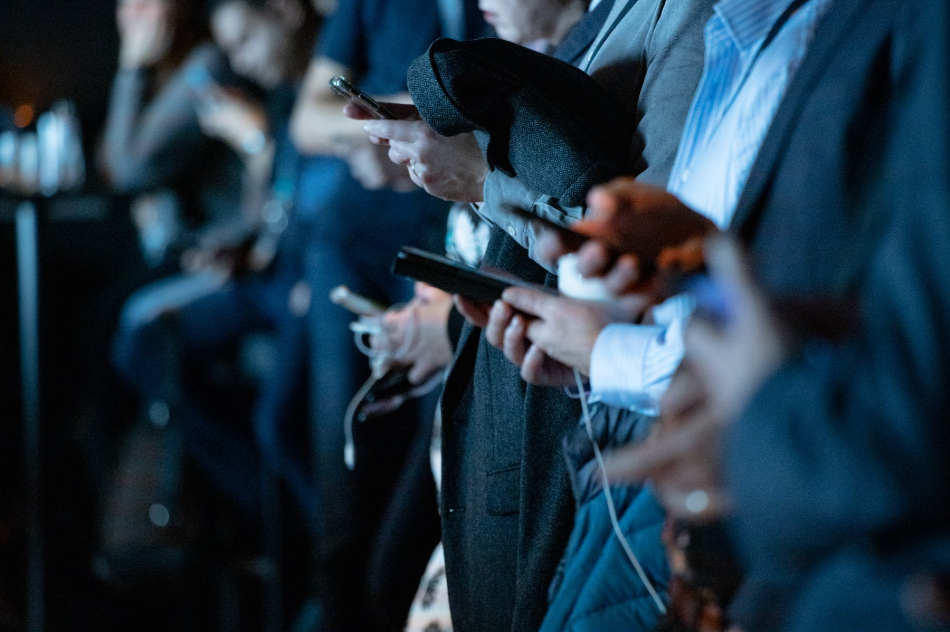Jul 1 2020
According to scientists, the signals sent and received from speakers, microphones, and cellular phones can alert people when they are close to someone who has acquired the COVID-19 infection.
 New research suggests high frequency sounds passed between cell phones could be a way to more accurately trace the potential spread of the COVID-19 virus. Image Credit: Unsplash.
New research suggests high frequency sounds passed between cell phones could be a way to more accurately trace the potential spread of the COVID-19 virus. Image Credit: Unsplash.
Scientists have explained a system that could produce anonymous and random IDs for every phone, automatically transmit ultrasonic signals between speakers and microphones of phones within a specific radius, and make use of the data exchanged via this acoustic channel for contact tracing.
If individuals have tested positive for the COVID-19 infection, they would update their anonymous IDs and also the timestamp when the IDs were created in the past two weeks to a central database controlled by a reliable health care authority.
Every individual in the system will extract the IDs of the positive patient and compare locally to verify if he or she has had any contact with the patient.
We want to generate some kind of sound that cannot be heard by humans, but that phones can hear.
Dong Xuan, Professor, Department of Computer Science and Engineering, The Ohio State University
Xuan is also the leading faculty member of the study.
Xuan continued, “The phone will periodically generate some kind of sound token and send that token to nearby phones—and the key advantage over other technologies is that the ultrasound could have limited range and will not penetrate obstacles such as walls.”
The study was posted on the arXiv pre-print server and has not been reviewed by peers.
Tech firms have already suggested using the Bluetooth capability of a phone to construct such a network. Bluetooth capability enables cell phones to “talk” to other neighboring devices such as speakers, smartwatches, and phones. However, Bluetooth may result in a huge number of false-positive close contacts.
Bluetooth has a problem of traveling too far. Bluetooth signals can travel through walls and reach further than we would want. And with COVID, we want to find just those people with whom you have been in direct close contact—within that 6-foot radius, for example.
Zhiqiang Lin, Study Co-Author and Associate Professor, Computer Science and Engineering, The Ohio State University
Contact tracing—that is, finding out people who might have come into contact with persons, especially those who have tested positive for the virus—has been a major part of the public health plan to prevent the spread of illnesses for many years.
However, contact tracing has been complicated in the case of COVID-19. Individuals may remember the person they met for dinner prior to the appearance of symptoms, but they probably would not know how to contact the strangers who were next to them in the grocery store.
“It’s hard for people to remember who they had contact with, and augmenting manual contact tracing with automated techniques could greatly increase its reliability,” stated Ness Shroff, who is an Ohio Eminent Scholar in networking and communications and heading an effort to develop an automated system for symptom reporting and contact tracing for the return to full operations at Ohio State.
According to Shroff, cell phone tracing could solve that issue—as long as people utilize it and as long as it is precise and offers an acceptable level of privacy.
For instance, in Singapore, authorities had set up a contact tracing smartphone app in early March. They calculated that around 60% of people should use the app for it to be effective.
Also, the Singapore app traced contact between individuals who were in the same locality but separated by windows or walls.
According to Shroff, the acoustic sensors may provide more control in the effort to track the virus.
In addition to exploring Bluetooth, we want to leverage other sensors in the phone to do contact tracing. The key advantage of this work is that it lets a phone search for complementary sensors and uses the sensors to detect proximity. That is something that can complement the Bluetooth technology.
Dong Xuan, Professor, Department of Computer Science and Engineering, The Ohio State University
Adam C. Champion, Yuxiang Luo, Cheng Zhang, Yunqi Zhang, and Chaoshun Zuo are other Ohio State scientists involved in this study. At present, the work is partly funded by an NSF RAPID grant for defending against the COVID-19 infection.